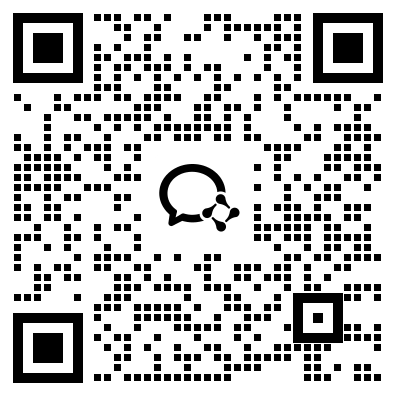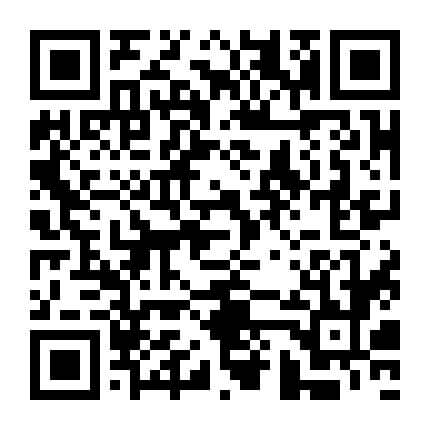考研201英语(一)在线题库每日一练(三十四)
摘要:以下是希赛网给大家分享考研201英语(一)在线题库每日一练,希望通过刷题可以帮助大家巩固重要知识点,对知识点查漏补缺,祝愿大家能顺利通过考试!
本文提供考研201英语(一)在线题库每日一练,以下为具体内容
1、In 1924 America's National Research Council sent two engineers to supervise a series of industrial experiments at a large telephone-parts factory called the Hawthorne Plant near Chicago. It hoped they would learn how stop-floor lighting (1)workers' productivity. Instead, the studies ended (2) giving their name to the "Hawthorne effect", the extremely influential idea that the very (3) to being experimented upon changed subjects' behavior. The idea arose because of the behavior of the women in the (4) Hawthorne plant. According to (5) of the experiments, their hourly output rose when lighting was increased, but also when it was dimmed. It did not (6) what was done in the experiment; (7)something was changed, productivity rose. A(n) (8) that they were being experimented upon seemed to be (9) to alter workers' behavior (10) itself. After several decades, the same data were (11) to econometric the analysis. Hawthorne experiments has another surprise in store (12) the descriptions on record, no systematic (13) was found that levels of productivity were related to changes in lighting. It turns out that peculiar way of conducting the experiments may have led to (14) interpretation of what happened. (15), lighting was always changed on a Sunday. When work started again on Monday, output (16) rose compared with the previous Saturday and (17) to rise for the next couple of days. (18), a comparison with data for weeks when there was no experimentation showed that output always went up on Monday, workers (19) to be diligent for the first few days of the week in any case, before (20) a plateau and then slackening off. This suggests that the alleged "Hawthorne effect" is hard to pin down.
问题1
A、affected
B、achieved
C、extracted
D、restored
问题2
A、at
B、up
C、with
D、off
问题3
A、truth
B、sight
C、act
D、proof
问题4
A、controversial
B、perplexing
C、mischievous
D、ambiguous
问题5
A、requirements
B、explanations
C、accounts
D、assessments
问题6
A、conclude
B、matter
C、indicate
D、work
问题7
A、as far as
B、for fear that
C、in case that
D、so long as
问题8
A、awareness
B、expectation
C、sentiment
D、illusion
问题9
A、suitable
B、excessive
C、enough
D、abundant
问题10
A、about
B、for
C、on
D、by
问题11
A、compared
B、shown
C、subjected
D、conveyed
问题12
A、contrary to
B、consistent with
C、parallel with
D、peculiar to
问题13
A、evidence
B、guidance
C、implication
D、source
问题14
A、disputable
B、enlightening
C、reliable
D、misleading
问题15
A、In contrast
B、For example
C、In consequence
D、As usual
问题16
A、duly
B、accidentally
C、unpredictably
D、suddenly
问题17
A、failed
B、ceased
C、started
D、continued
问题18
A、Therefore
B、Furthermore
C、However
D、Meanwhile
问题19
A、attempted
B、tended
C、chose
D、intended
问题20
A、breaking
B、climbing
C、surpassing
D、hitting
2、In his book The Tipping Point, Malcolm Gladwell argues that “social epidemics” are driven in large part by the actions of a tiny minority of special individuals, often called influentials, who are unusually informed, persuasive, or well connected. The idea is intuitively compelling, but it doesn't explain how ideas actually spread.The supposed importance of influentials derives from a plausible-sounding but largely untested theory called the “two-step flow of communication”: Information flows from the media to the influentials and from them to everyone else. Marketers have embraced the two-step flow because it suggests that if they can just find and influence the influentials, those selected people will do most of the work for them. The theory also seems to explain the sudden and unexpected popularity of certain looks, brands, or neighborhoods. In many such cases, a cursory search for causes finds that some small group of people was wearing, promoting, or developing whatever it is before anyone else paid attention. Anecdotal evidence of this kind fits nicely with the idea that only certain special people can drive trends. In their recent work, however, some researchers have come up with the finding that influentials have far less impact on social epidemics than is generally supposed. In fact, they don't seem to be required at all.The researchers' argument stems from a simple observation about social influence: with the exception of a few celebrities like Oprah Winfrey—whose outsize presence is primarily a function of media, not interpersonal, influence—even the most influential members of a population simply don't interact with that many others. Yet it is precisely these non-celebrity influentials who, according to the two-step-flow theory, are supposed to drive social epidemics, by influencing their friends and colleagues directly. For a social epidemic to occur, however, each person so affected, must then influence his or her own acquaintances, who must in turn influence theirs, and so on; and just how many others pay attention to each of these people has little to do with the initial influential. If people in the network just two degrees removed from the initial influential prove resistant, for example, the cascade of change won't propagate very far or affect many people.Building on the basic truth about interpersonal influence, the researchers studied the dynamics of social influence by conducting thousands of computer simulations of populations, manipulating a number of variables relating to people's ability to influence others and their tendency to be influenced. They found that the principal requirement for what is called “global cascades” — the widespread propagation of influence through networks—is the presence not of a few influentials but, rather, of a critical mass of easily influenced people. 1.By citing the book The Tipping Point, the author intends to( ).2.The author suggests that the "two-step-flow theory" ( ). 3.What the researchers have observed recently shows that ( ). 4.The underlined phrase “these people” in paragraph 4 refers to the ones who ( ). 5.What is the essential element in the dynamics of social influence?
问题1
A、analyze the consequences of social epidemics
B、discuss influentials' function in spreading ideas
C、exemplify people's intuitive response to social epidemics
D、describe the essential characteristics of influentials
问题2
A、serves as a solution to marketing problems
B、has helped explain certain prevalent trends
C、has won support from influentials
D、requires solid evidence for its validity
问题3
A、the power of influence goes with social interactions
B、interpersonal links can be enhanced through the media
C、influentials have more channels to reach the public
D、most celebrities enjoy wide media attention
问题4
A、stay outside the network of social influence
B、have little contact with the source of influence
C、are influenced and then influence others
D、are influenced by the initial influential
问题5
A、The eagerness to be accepted.
B、The impulse to influence others.
C、The readiness to be influenced.
D、The inclination to rely on others.
3、Ancient Greek philosopher Aristotle viewed laughter as “a bodily exercise precious to health.” But(1)some claims to the contrary, laughing probably has little influence on physical fitness. Laughter does (2)short-term changes in the function of the heart and its blood vessels, (3) heart rate and oxygen consumption. But because hard laughter is difficult to (4), a good laugh is unlikely to have (5) benefits the way, say, walking or jogging does. (6), instead of straining muscles to build them, as exercise does, laughter apparently accomplishes the (7), studies dating back to the 1930's indicate that laughter (8) muscles, decreasing muscle tone for up to 45 minutes after the laugh dies down. Such bodily reaction might conceivably help (9) the effects of psychological stress. Anyway, the act of laughing probably does produce other types of (10) feedback, that improve an individual's emotional state. (11) one classical theory of emotion, our feelings are partially rooted (12) physical reactions. It was argued at the end of the 19th century that humans do not cry (13) they are sad but they become sad when the tears begin to flow. Although sadness also (14) tears, evidence suggests that emotions can flow (15) muscular responses. In an experiment published in 1988, social psychologist Fritz Strack of the University of Würzburg in Germany asked volunteers to (16) a pen either with their teeth—thereby creating an artificial smile—or with their lips, which would produce a(n)(17) expression. Those forced to exercise their smiling muscles(18) more enthusiastically to funny cartoons than did those whose months were contracted in a frown,(19) that expressions may influence emotions rather than just the other way around. (20), the physical act of laughter could improve mood.
问题1
A、among
B、except
C、despite
D、like
问题2
A、reflect
B、demand
C、indicate
D、produce
问题3
A、stabilizing
B、boosting
C、impairing
D、determining
问题4
A、transmit
B、sustain
C、evaluate
D、observe
问题5
A、measurable
B、manageable
C、affordable
D、renewable
问题6
A、In turn
B、In fact
C、In addition
D、In brief
问题7
A、opposite
B、impossible
C、average
D、expected
问题8
A、hardens
B、weakens
C、tightens
D、relaxes
问题9
A、aggravate
B、generate
C、moderate
D、enhance
问题10
A、physical
B、mental
C、subconscious
D、internal
问题11
A、Except for
B、According to
C、Due to
D、As for
问题12
A、with
B、on
C、in
D、at
问题13
A、unless
B、until
C、if
D、because
问题14
A、exhausts
B、follows
C、precedes
D、suppresses
问题15
A、into
B、from
C、towards
D、beyond
问题16
A、fetch
B、bite
C、pick
D、hold
问题17
A、disappointed
B、excited
C、joyful
D、indifferent
问题18
A、adapted
B、catered
C、turned
D、reacted
问题19
A、suggesting
B、requiring
C、mentioning
D、supposing
问题20
A、Eventually
B、Consequently
C、Similarly
D、Conversely
4、In the idealized version of how science is done, facts about the world are waiting to be observed and collected by objective researchers who use the scientific method to carry out their work. But in the everyday practice of science, discovery frequently follows an ambiguous and complicated route. We aim to be objective, but we cannot escape the context of our unique life experience. Prior knowledge and interest influence what we experience, what we think our experiences mean, and the subsequent actions we take. Opportunities for misinterpretation, error, and self-deception abound. Consequently, discovery claims should be thought of as protoscience. Similar to newly staked mining claims, they are full of potential. But it takes collective scrutiny and acceptance to transform a discovery claim into a mature discovery. This is the credibility process, through which the individual researcher's me, here, now becomes the community's anyone, anywhere, anytime. Objective knowledge is the goal, not the starting point. Once a discovery claim becomes public, the discoverer receives intellectual credit. But, unlike with mining claims, the community takes control of what happens next. Within the complex social structure of the scientific community, researchers make discoveries; editors and reviewers act as gatekeepers by controlling the publication process; other scientists use the new finding to suit their own purposes; and finally, the public (including other scientists) receives the new discovery and possibly accompanying technology. As a discovery claim works it through the community, the interaction and confrontation between shared and competing beliefs about the science and the technology involved transforms an individual's discovery claim into the community's credible discovery. Two paradoxes exist throughout this credibility process. First, scientific work tends to focus on some aspect of prevailing Knowledge that is viewed as incomplete or incorrect. Little reward accompanies duplication and confirmation of what is already known and believed. The goal is new-search, not re-search. Not surprisingly, newly published discovery claims and credible discoveries that appear to be important and convincing will always be open to challenge and potential modification or refutation by future researchers. Second, novelty itself frequently provokes disbelief. Nobel Laureate and physiologist Albert Azent-Gyorgyi once described discovery as “seeing what everybody has seen and thinking what nobody has thought.” But thinking what nobody else has thought and telling others what they have missed may not change their views. Sometimes years are required for truly novel discovery claims to be accepted and appreciated. In the end, credibility “happens” to a discovery claim—a process that corresponds to what philosopher Annette Baier has described as the commons of the mind. “We reason together, challenge, revise, and complete each other's reasoning and each other's conceptions of reason.” 1.According to the first paragraph, the process of discovery is characterized by its( ).2.It can be inferred from Paragraph 2 that credibility process requires ( ). 3.Paragraph 3 shows that a discovery claim becomes credible after it ( ). 4.Albert Szent-Gyorgyi would most likely agree that ( ). 5.Which of the following would be the best title of the test?
问题1
A、uncertainty and complexity
B、misconception and deceptiveness
C、logicality and objectivity
D、systematicness and regularity
问题2
A、strict inspection
B、shared efforts
C、individual wisdom
D、persistent innovation
问题3
A、has attracted the attention of the general public
B、has been examined by the scientific community
C、has received recognition from editors and reviewers
D、has been frequently quoted by peer scientists
问题4
A、scientific claims will survive challenges
B、discoveries today inspire future research
C、efforts to make discoveries are justified
D、scientific work calls for a critical mind
问题5
A、Novelty as an Engine of Scientific Development.
B、Collective Scrutiny in Scientific Discovery.
C、Evolution of Credibility in Doing Science.
D、Challenge to Credibility at the Gate to Science.
5、People are, on the whole, poor at considering background information when making individual decisions. At first glance this might seem like a strength that (1) the ability to make judgments which are unbiased by (2) factors. But Dr. Uri Simonsohn speculated that an inability to consider the big (3) was leading decision-makers to be biased by the daily samples of information they were working with. (4), he theorised that a judge (5) of appearing too soft (6) crime might be more likely to send someone to prison (7) he had already sentenced five or six other defendants only to forced community service on that day.To (8) this idea, he turned to the university-admissions process. In theory, the (9) of an applicant should not depend on the few others (10) randomly for interview during the same day, but Dr Simonsohn suspected the truth was (11).He studied the results of 9,323 MBA interviews (12) by 31 admissions officers. The interviewers had (13) applicants on a scale of one to five. This scale (14) numerous factors into consideration. The scores were (15) used in conjunction with an applicant’s score on the Graduate Management Admission Test, or GMAT, a standardised exam which is (16) out of 800 points, to make a decision on whether to accept him or her.Dr Simonsonh found if the score of the previous candidate in a daily series of interviewees was 0.75 points or more higher than that of the one (17) that, then the score for the next applicant would (18) by an average of 0.075 points. This might sound small, but to (19) the effects of such a decrease a candidate would need 30 more GMAT points than would otherwise have been (20).
问题1
A、grants
B、submits
C、transmits
D、delivers
问题2
A、minor
B、objective
C、crucial
D、external
问题3
A、issue
B、vision
C、picture
D、moment
问题4
A、For example
B、On average
C、In principle
D、Above all
问题5
A、fond
B、fearful
C、capable
D、thoughtless
问题6
A、in
B、on
C、to
D、for
问题7
A、if
B、until
C、though
D、unless
问题8
A、promote
B、emphasize
C、share
D、test
问题9
A、decision
B、quality
C、status
D、success
问题10
A、chosen
B、studied
C、found
D、identified
问题11
A、exceptional
B、defensible
C、replaceable
D、otherwise
问题12
A、inspired
B、expressed
C、conducted
D、secured
问题13
A、assigned
B、rated
C、matched
D、arranged
问题14
A、put
B、got
C、gave
D、took
问题15
A、instead
B、then
C、ever
D、rather
问题16
A、selected
B、passed
C、marked
D、introduced
问题17
A、before
B、after
C、above
D、below
问题18
A、jump
B、float
C、drop
D、fluctuate
问题19
A、achieve
B、undo
C、maintain
D、disregard
问题20
A、promising
B、possible
C、necessary
D、helpful
点击查看【完整】试卷>>延伸阅读
- 历年考研国家分数线汇总(更新至2025年)
- 2025考研国家分数线正式发布
- 2025全国各省考研初试成绩公布时间汇总(更新中)
- 2025年考研成绩公布时间及查询流程
- 2025年全国硕士研究生招生考试(初试)温馨提示汇总
- 2025年全国硕士研究生招生考试考场规则

考研微信公众号

考研备考资料免费领取
去领取
- 1
- 1
- 6
 专注在线职业教育24年
专注在线职业教育24年









 扫描二维码
扫描二维码
 扫描二维码
扫描二维码








